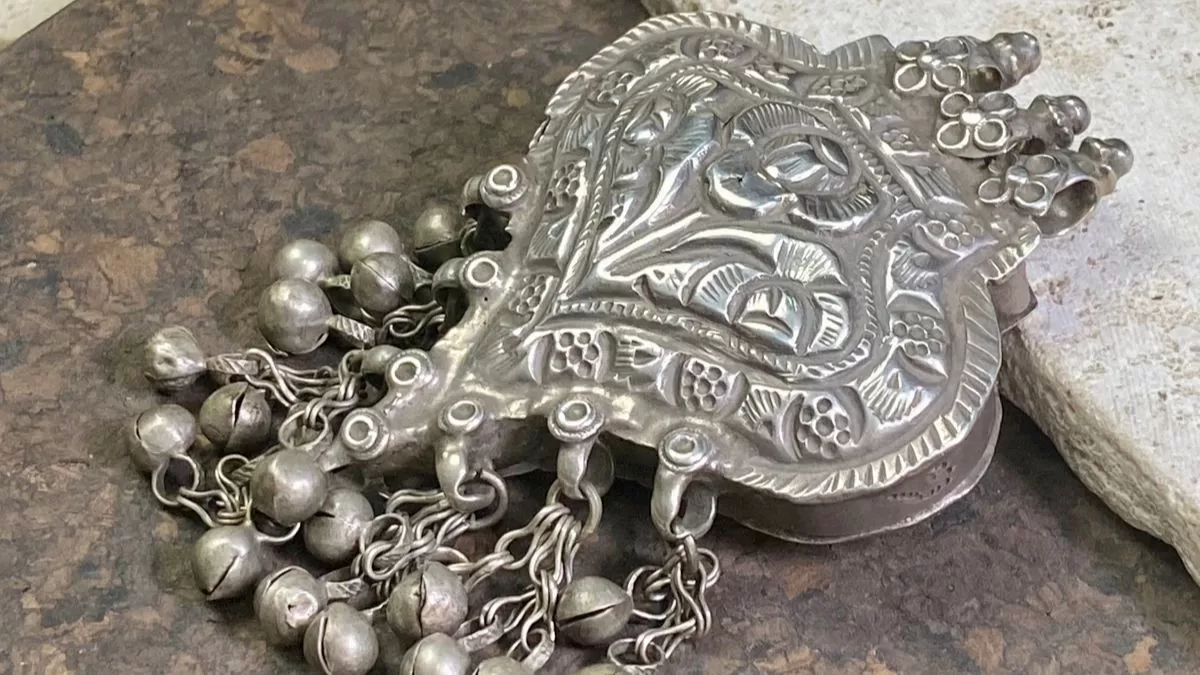History of Oxidised Jewellery | 10 Amazing Historical Facts
History of Oxidised Jewellery | 10 Amazing Historical Facts The history of oxidised jewellery is long and varied. It was popular in early Egyptian and Greek cultures, and continued to be admired through the Renaissance and Baroque periods. During the Victorian era, oxidised jewellery experienced a surge in popularity, with many pieces featuring intricate patterns and delicate designs. Throughout the 20th century, it remained a beloved choice — and today, it continues to captivate jewellery lovers with its rich, vintage charm. The history of oxidised jewellery is truly a testament to its timeless appeal. If you’d love to experience this enduring elegance for yourself, explore our oxidised jewellery collection and discover pieces that beautifully blend history with contemporary style. Today, oxidised jewellery is a popular choice for jewellery lovers who want to make a statement. The history of oxidised jewellery can be traced back to the Middle Ages, when goldsmiths used a process of acid baths to create an antiqued look. By heating the metal in a mixture of nitric and hydrochloric acids, they were able to achieve a unique, dark patina. Oxidised jewellery has since become a popular choice for those who want to make a bold statement with their jewellery. In the 18th century, jewellers began to use a new technique to create oxidised jewellery. This involved using a chemical called liver of sulfur, which is still used today. This chemical can be applied to silver, brass and copper to create a dark patina. The liver of sulfur reacts with the metal to form a black oxide layer, which helps to protect the metal from corrosion and tarnish. Oxidised jewellery is often seen as a traditional, old-fashioned style. However, in recent years, it has become much more popular and is now seen as a modern, fashionable choice. Oxidised jewellery is often featured in high-end fashion magazines and worn by celebrities. It is also becoming more popular with everyday people. Many people are drawn to the unique look of oxidised jewellery, as it can add an interesting contrast to an outfit or be worn as a subtle statement piece. The history of oxidised jewellery dates back to centuries ago. Oxidised jewellery is a type of jewellery that is created by oxidising metals, such as copper, bronze, brass, or silver, to create a darker, textured look. The most common type of oxidised jewellery is silver jewellery that is darkened by a chemical reaction with an oxidising agent such as sulphur, creating a distinctive black patina. This jewellery can be found in many different forms, from rings, earrings, necklaces, and bracelets to brooches and other accessories. The history of oxidised jewellery dates back centuries. This unique type of jewellery is created by oxidising metals like copper, bronze, brass, or silver to achieve a darker, textured look. The most popular and widely loved form is oxidised silver jewellery, which is darkened through a chemical reaction with an oxidising agent such as sulphur, resulting in a distinctive black patina. You’ll find this beautiful style in many forms — from rings, earrings, necklaces, and bracelets to brooches and unique accessories. If you’re intrigued by this timeless craft, browse our exclusive oxidised jewellery collection and discover pieces that celebrate both tradition and contemporary design. The history of oxidised jewellery can also be traced to the Middle Ages, when blacksmiths began to use a variety of metals to create pieces of jewellery with a unique look. They used different types of metals, such as copper, brass, and silver, to create pieces with a distinctive look. Blackening metals was a common practice, and this technique was used to create intricate and detailed pieces of jewellery. The history of oxidised jewellery also extends to the Victorian era, when oxidised silver was popularised. During this period, a variety of settings, from baroque to art nouveau, were popularised. Oxidised silver was used in intricate settings, such as filigree and granulation, to create delicate and beautiful pieces of jewellery. The history of oxidised jewellery also extends to the 20th century, when it once again became popular. During this period, oxidised metals were used to create statement pieces, such as chunky rings and statement necklaces. As jewellery trends evolved, oxidised jewellery was used to create unique and fashionable pieces. Today, oxidised jewellery is still popular, with many jewellery designers creating pieces that incorporate oxidised metals. Whether it’s a vintage piece or a modern take on a classic, oxidised jewellery is an eye-catching and timeless addition to any jewellery collection. Oxidised jewellery is a timeless style that is still popular today. It has a long history, and it can be used to create a unique and stylish look. Whether you’re looking for a vintage-inspired piece or something more modern, oxidised jewellery is a great choice. 10 Amazing Historical facts about oxidised jewellery So, if you’re looking to add a unique and timeless touch to your jewellery collection, look no further than the history of oxidised jewellery. With its distinctive look and timeless appeal, oxidised jewellery is sure to add a touch of sophistication and style to your wardrobe. Step into the rich history of oxidised jewellery with Avvni The Store, where every piece carries the charm of timeless tradition blended with modern craftsmanship. Discover fascinating historical facts and stories behind this enduring art form while exploring our exclusive oxidised collections on Amazon and Flipkart. Follow us on Instagram for daily inspiration, heritage highlights, and glimpses of our newest handcrafted designs. PRODUCTS YOU MAY LIKE Explore oxidised jewellery Also Read: Who Invented Jewellery? A Fascinating Journey Through Time Also Read: The Fascinating History of the Hasli Necklace
History of Oxidised Jewellery | 10 Amazing Historical Facts Read Post »



